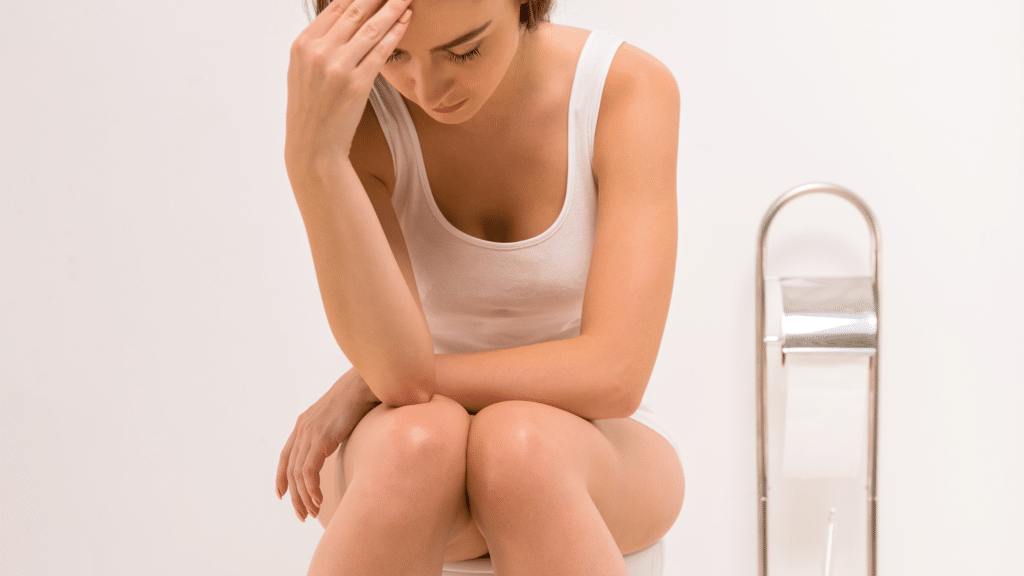Overactive bladder
Do you know where all the bathrooms are in the mall? Do you plan ahead what and how much fluid you drink in order to prevent accidents? Do you visit bathrooms frequently? And maybe sometimes you don’t make it to the bathroom?Do you have to rush to the bathroom the moment your hand touches the handle of your front door? Well, if any of these situations sound familiar, you might be suffering from overactive bladder.

Table of Contents
What is overactive bladder (OAB)?
It is the name of a group of urinary symptoms, such as urinary urgency, urinary frequency, getting up at night to urinate, and/or uncontrolled leakage of urine associated with the urge to void.
Why is it important to recognize this condition?
Because treatments that can improve the quality of your life are available.
Why does OAB happen?
OAB can develop due to different reasons, such as hormonal changes, urinary tract infections, neurologic disorders (stroke, multiple sclerosis), side effects of medications, etc. OAB frequently develops as people age, however, many young adults also suffer from this.
OAB affects more women than men, but not everyone is actually searching for help due to the associated stigmas, feeling of shame, and belief that OAB is a normal part of aging.
Adjustments to improve symptoms
If you want to improve the quality of your life and live the life you deserve, I will share with you several simple adjustments that can significantly improve your symptoms.
First of all, it is important to establish the baseline of your symptoms because it will give you an opportunity to assess the effect of interventions.
How do you learn about your baseline?
A bladder diary is a simple way to record your daily bladder behavior. It includes an area to record how much you drink, an area to record bathroom trips, and an area to mark any urinary leaks and their amount. It’s helpful to keep the diary for at least two days to assess the baseline.
Start with evaluating the fluid you drink. It’s important to look at the type of fluid and its amount. Several types of drinks can make your urgency and frequency worse, for example coffee, drinks containing caffeine or artificial sweeteners, alcohol, sparkling water, and soda.
Unless you were told by your physician to drink large volumes of fluid, you should drink only when you’re thirsty. The simple way to assess how hydrated or dehydrated you are is to look at the color of your urine. The goal is to have light yellow colored urine. If it’s darker, you need to drink more; if it’s lighter or clear, you are drinking too much. Keep in mind that some food, medications, and exercise can affect the color of your urine.
If you struggle with getting up at night, make sure to stop drinking fluids three to four hours before bedtime. Women often ask me, “Can I have a glass of wine before bed?” or “I’m thirsty at night, can I drink more?” My answer is: Of course you can, just realize that the more fluid you drink, the more you will pee. So, pick your poison: A glass of wine and trips to the bathroom or no fluid and sleeping through the night. There is no right or wrong answer, choose based on what is more important to you.
Also, keep in mind that fluids are not only in what you drink but also in what you eat. Foods like soups, salads, and fruits all contain fluid and should be accounted for.
The next intervention is timely voiding. Make sure to go to the bathroom every two hours whether you have an urge or not. This can prevent “unscheduled” accidents. If you usually go to the bathroom more than every two hours, you may benefit from bladder training.
How do you do bladder training? When you feel the urge to urinate, contract your pelvic floor muscles several times, and wait 10 minutes before going to the bathroom.
What is the easiest way to identify your pelvic floor muscles? Pretend that you are in public and are trying to hold gas. The muscles that you use are actually the exact same muscles that you would use to perform Kegel exercises and bladder training. Start with contracting your muscles and hold for 10 seconds and release—do this three times and wait 10 minutes before going to the bathroom. Increase the time between having the urge to actually go to the bathroom by five minutes every week until you reach the two hour mark.
When you change your drinking habits, do timely voids and bladder training to experiment and see if what you have accomplished actually made a difference, then complete the bladder diary again!
Treatments
If you still have symptoms that bother you despite these interventions, the next step is to try a medication.
There are two different classes of medications: antimuscarinics and beta-3 agonists. These two medications work differently, but they produce the same result on the bladder. They relax the muscles of the bladder wall and, as a result, decrease the urge. The difference between these two medications is the side effect profile and cost.
Antimuscarinic medications like Ditropan®, Vesicare®, and Trospium usually are more affordable and have better insurance coverage, but about 20% of users will develop dry mouth, dry eyes, and/or constipation.
Beta-3 agonists like Myrbetriq® and GEMTESA® are usually a little pricey and not always covered by insurance but have fewer side effects associated with their use. Myrbetriq® can cause elevated blood pressure, headaches, and/or runny nose. GEMTESA® has no known complications.
Keep in mind that sometimes we give a trial of medication as a way to establish or confirm the diagnosis. For example, if your clinical picture was not clear but your urinary symptoms improved on OAB medication, you have an OAB.
Another way to treat OAB is with Botox®. Yes, you heard that right—the same Botox that improves your facial wrinkles treats OAB. When injected into the bladder muscles, it causes them to relax and prevents sudden bladder urges and associated leakage. Bladder Botox is good for those women who prefer to avoid taking daily systemic medications and would rather get Botox two or three times a year instead. This procedure is usually done in the office after application of a topical numbing gel. It takes about two minutes to perform, and the result is noticeable in two weeks.
The rare side effect is a strong reaction to Botox that turns into difficulty with voiding. The good and bad news is the effect of Botox is reversible.
One more option to treat OAB is neuromodulation, which is basically retraining of the bladder nerves. Neuromodulation can be done in two different ways: posterior tibial nerve stimulation (PTNS for short) or sacral neuromodulation.
PTNS is like “acupuncture on steroids”. We place an acupuncture-type needle in the ankle area where the peripheral branches of the nerve innervating the bladder go through. The pulses generated by the current attached to the needle help to regulate innervation of the bladder and help with OAB symptoms. Usually, a patient starts with one weekly session for 12 treatments, and if there is an improvement in symptoms, treatments are spread out with the goal of getting to one monthly maintenance session.
Sacral neuromodulation works centrally on sacral nerves rewiring the main nerves innervating the bladder, like a pacemaker. Sacral neuromodulation is a two-step process. First is the trial phase when the patient gets a temporary lead placed in the office or in the operating room. For a week, the patient is instructed to monitor and record her symptoms. If symptoms improve during the trial phase, the next step is implantation of a permanent pacemaker that is done in the operating room.
The good thing about sacral neuromodulation is that it helps with OAB and fecal incontinence, which are both often present in the mature population.
All of these treatments can be offered and used based on individual patient preferences and the clinical situation.
Schedule an Appointment
If you’re interested in learning more about your options for Menopause management, your first step is to schedule an appointment with Dr. Dubinskaya. To get started, contact our office by calling 424-210-9030 or filling out our online form.

MEET Dr. Alexandra Dubinskaya
A leader in women’s sexual health
Dr. Alexandra Dubinskaya is a board-certified, fellowship-trained Urogynecologist and Sexual Health specialist whose mission is to enhance women’s quality of life by improving their pelvic and sexual health. Dr. Dubinskaya’s focus is on making a difference in people’s lives through state-of-the-art, compassionate, and personally tailored care.

